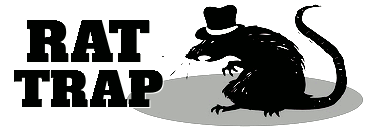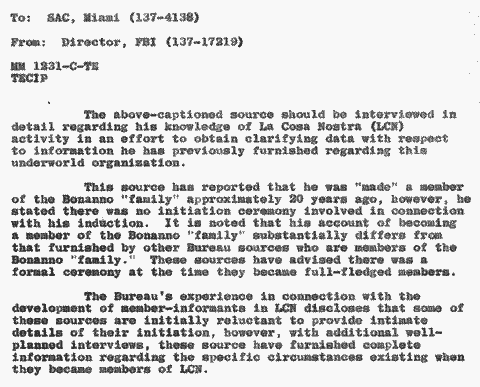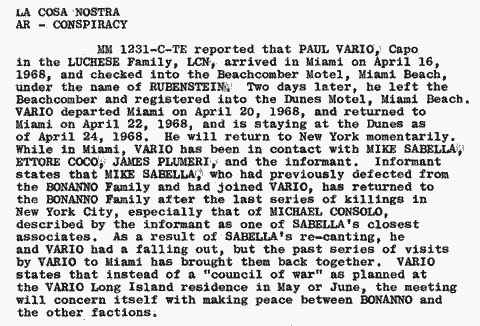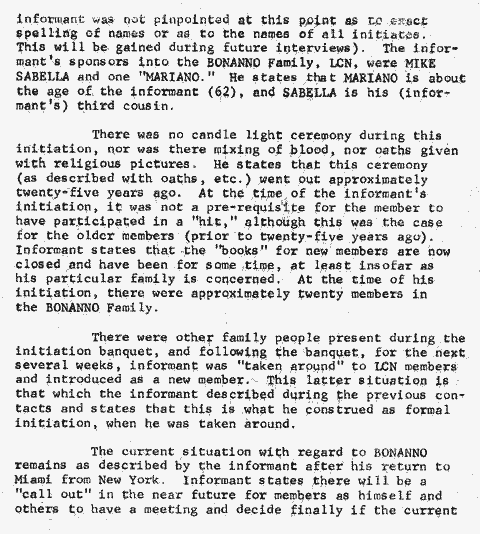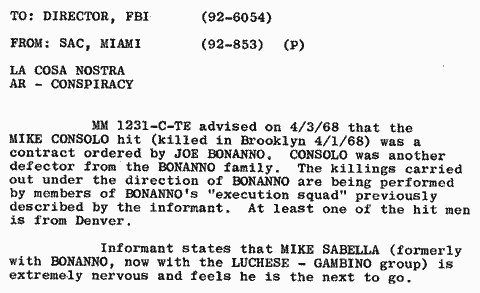[Editor's note: Following is an updated version of an article that originally appeared in the August 2017 issue of Informer: The History of American Crime and Law Enforcement.]
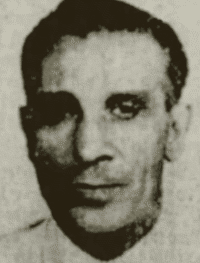
Dara
The Federal Bureau of Investigation (FBI) has relied on member-informants to help investigate La Cosa Nostra (LCN) ever since Joseph Valachi began to "talk." Mobsters who secretly turn against "La Cosa Nostra" are in a position to give the FBI access to the history and activities of crime groups that is hard to equal. [1] Some, like Valachi, testify publicly and become household names, but most remain unknown to the public and to the organization itself.
In the late 1960s, a Florida-based member of the Bonanno Crime Family began to cooperate with the FBI. He shed light on gangland murders, spilled secrets about LCN members and gave the FBI a front row seat to the turmoil within the Bonanno organization. His cooperation was never suspected by his crime family, and he died a member in good standing. Now, clues found in declassified FBI documents may help to reveal his identity for the first time.
Tracking down an informant
The first indication that a Bonanno Crime Family member in the Miami-area had begun to cooperate surfaced in an FBI report dated September 7, 1967. Produced by the Miami field office for FBI headquarters, the report referred to a newly developed "source [that] has reported that he was 'made' a member of Bonanno 'family' approximately 20 years ago." [2]
The FBI thought the "veteran hoodlum [had] exceptional potential to assist the Bureau." To conceal his identity, the FBI referred to the informant by the symbol number "MM-1231-C-TE." [3] The two-page report was short on details about the informant but it did establish that he was an old-time Bonanno Crime Family member living in the Miami-area.
Trying to discern the identity of a LCN informant using only his crime family affiliation and city of residence would ordinarily produce too many suspects to be much use. For example, the Bonanno Crime Family alone had well over one hundred members in the New York City-area at the time. [4] But the number of LCN members in South Florida was much lower.
According to an FBI report from September 1967, the time the informant began to cooperate, a total of twenty-two mobsters from eight crime families were known to be active in the Miami-area. [5] Some of the prominent mobsters on the list included Pasquale Erra from the Genovese Crime Family, Eddie Coco from the Lucchese Crime Family and Joseph Massei from the Detroit Crime Family. The only Bonanno Crime Family member listed at the time was William "Willie the Tile Maker" Dara. [6]
A meeting looms large

Sabella
Locating additional evidence identifying William Dara as the Florida-based Bonanno Crime Family informant within the few available FBI documents is easier said than done. [7] The FBI tries to preserve the anonymity of an informant, even after he dies. [8] FBI reports are written in such a way that details that could be used to help unmask him, like age or criminal history, are generally omitted. If they are included, they usually get redacted before a report is declassified. Sometimes, though, things slip through.
FBI agents were obliged to furnish regular reports about their LCN investigations, whether they had new information or not. To help meet that requirement, as former FBI agent Anthony Villano noted in his memoir, agents regularly padded new reports with old Intel. [9] The result was Intel that was omitted or redacted in one report was sometimes included in another. By comparing reports, details that seem innocuous in one context can become revealing in another.
For example, in a FBI report from April 26, 1968, a source with the informant symbol number "MM 1231-C-TE," the same symbol number as the newly developed Bonanno informant, told the FBI that Lucchese Crime Family member Paul Vario had recently visited Miami. [10] The informant said he met twice with Vario and fellow LCN members Eddie Coco, James Plumeri and Michael Sabella. [11]
The report is significant because it establishes that informant "MM 1231-C-TE" was present at those meetings.
Details about the two meetings were included in another FBI report, but this time all the participants were identified by name.
According to the second FBI report, "on April 26, 1968 MM 1231-C-TE reported Paul Vario, a 'capodecina,'' in the Thomas Lucchese Family of LCN came to the Miami area at least twice during April... [and met] with Michael Sabella, Eddie Coco, James Plumeri and Willie Dara." [12]
The second report shows that Dara was the unknown informant referred to in the first report. And it confirms, in all likelihood, that Dara was the Florida-based Bonanno Crime Family member.
The suspicion that the informant and William Dara are one and the same was backed up in another FBI report. In 1967, the informant told federal agents that he was sixty-two years of age. [13] This was consistent with Dara who was born in 1905.
On the way up
William Joseph Dara was born July 12, 1905, in Sicily, the first-born child of Nicholas and Susana Dara. Dara immigrated to the United States with his mother in 1910. [14] His father had immigrated to New York City in 1907. [15] Census records show Dara completed school to the eighth grade and then became a tile setter in the construction trade. [16] This line of work would give Dara his mob moniker of "Willie the Tile Maker."
By 1930, twenty-five year-old Dara was living in Brooklyn with his parents and eight siblings. At least three brothers would end up on the wrong side of the law. [17] The unmarried Dara was still living at home with his parents in 1940. [18]
Dara's arrest record went back to at least 1931 and included charges for possession of stolen furs, robbery, gambling and drugs. [19] In 1950, he was arrested for vagrancy in Brooklyn with future Genovese Crime Family leader Dominick Alongi. [20]
By this time, William Dara was already an inducted member of the Bonanno Crime Family. Dara told the FBI in September 1967 that he "was initiated into the [Bonanno Crime Family] during the year (approximate) 1949 or 1950. The ceremony, if such is the proper terminology, took place at a restaurant in Manhattan, ...there were ten initiatives, including himself, at the banquet." [21] His sponsors were Mike Sabella and "Mariano."
Michael Sabella was a longtime Bonanno Crime Family capodecina and one-time associate of former boss Joseph Bonanno. [22] He was also Dara's third cousin and likely his connection to the Bonanno organization. According to Dara, Sabella "was formerly the number one man under Bonanno." [23] Dara was with his superior, Sabella, when he met twice with Paul Vario in April 1968. Sabella was an important leader under Carmine Galante in the 1970s but was later tripped up in the FBI's Operation Donnie Brasco investigation into the Bonanno Crime Family.
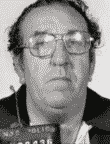
Vario
At some point after Dara was inducted into LCN, he relocated to South Florida. An FBI report from 1962 showed Dara was by then living in the Miami-area. He operated a cocktail lounge called "The Apartment" that the FBI said "features girls formerly employed in 'strip shows.'" He was there every night. The lounge had a reputation for prostitution and gambling. [24] The report went on to say that Dara was active as "a burglar and jewel thief," and that he was tied to a gambling and bookmaking group led by Genovese Crime Family captain Michael Coppola. [25]
Although William Dara was a known organized crime figure, he was not listed as a Bonanno Crime Family member at the so-called Valachi Hearings in 1963. All known LCN members were publicly identified through the U.S. Senate investigation into the Italian-American underworld. [26] A majority of the New York City-area members identified at the hearings were names supplied by Genovese Crime Family turncoat Joseph Valachi. But Valachi, who operated in the Bronx and Manhattan, may have been unfamiliar with the Brooklyn-based crime families. Most Bonanno Crime Family members were left unidentified. [27] Valachi did identify many New York-area mobsters residing in Miami but not Dara. [28]
Dara's disclosures
The bulk of Intel presumably supplied by William Dara is still buried in his FBI informant file. What's freely available now is a small number of FBI documents that only incidentally touch on his criminal activities. This article contains Intel supplied by an informant thought to be Dara. It was collected by sifting through available FBI documents and cross-referencing the informant symbol number, dates, names and content.
Certain things disclosed by William Dara seem to have been at odds to what is generally understood about LCN history. This is consistent with many informants who unintentionally (or intentionally) passed on a measure of misinformation or exaggeration when trying to recall details from long ago or outside their personal experience.
Induction ceremony
After William Dara was inducted into the Bonanno Crime Family around 1950, he told the FBI that he was introduced to other crime family members over the following weeks. As he was introduced, Dara's sponsor simply stated "he is with us." [29] Dara claimed that the Bonanno Crime Family had a total of twenty members in 1950. This was likely an underestimate of the true size. [30]
The FBI noted at the time that Dara's description of his induction ceremony departed from what Joseph Valachi and other Bonanno Crime Family member-informants had told them. Dara said there was no formal induction ceremony, only a banquet dinner. [31] There was no candlelit ceremony, no pricking of the finger for blood, and no oath or burning of a religious picture as described by most other member informants from the New York City-area. Nor was participation in a murder a pre-requisite for membership. Dara said all those things had once been true for the older members but they had "went out" years before his initiation. [32]
Turns on his friends
One of the first mobsters betrayed by William Dara was Santo Trafficante. Trafficante was already well-known to federal law enforcement as a Mafia leader in Florida and as an attendee of the Apalachin Meeting in 1957. Dara was a friend of Trafficante and played high stakes poker with him. [33] Dara told the FBI on August 18, 1967, that Trafficante was boss of the Tampa Crime Family and oversaw most of the LCN activities in the southeastern United States. [34] He thought that "Trafficante would have been the world's richest hoodlum had it not been for his forced departure from Cuba." [35]
According to Dara, Trafficante received "at least a piece of all the gambling action, including bookmaking and bolita in South Florida." Members that reported to him included Jimmie Costa Longo in Tampa, and Stefano Randazzo, Willie Dentamora and Dominick Lea in Miami. [36] Randazzo was a "capo" and had "the complete confidence of Trafficante". [37] Dominick "Little Dom" Lea was a bookmaker and numbers man, who operated strip clubs in Tampa and the Miami-area. [38]
Dara told the FBI about a lucrative construction racket that Santo Trafficante had going throughout the country. According to Dara, Santo Trafficante, along with Gambino members Tony Plate and "Frank Martin" Barranca, were secret partners in the building of a hospital in the Miami-area. Barranca was described as the "number one man" under Gambino underboss Aniello Dellacroce. The mobsters were confident that the profits from this operation would exceed anything generated by gambling, narcotics or loansharking. Government assistance programs like Medicare guaranteed the success of the project. [39]

Erra
Dara said Trafficante shared control of certain rackets with Pasquale Erra of the Genovese Crime Family. Erra handled "those areas of Miami under the influence of New York, particularly the Bronx." [40] He said Erra was "the Man" and that he had taken over from the late Genovese Crime Family capodecina Michael Coppola. [41] Dara identified a number of New York City-based crime family members operating in the Miami-area. [42] He said the Genovese Crime Family was the most powerful crime family in the Unites States, so Erra was accorded the most respect as a result. [43]
Dara revealed that Trafficante and other LCN members were expecting to receive a large narcotics shipment to traffic in Miami. He said Gambino Crime Family member Guido Penosi was "the biggest connection for heroin in the area." [44] He later advised that Penosi was out of the drug business because he had "lost huge amounts of money gambling during recent months and is on the verge of being broke." [45]
William Dara was a friend of Jimmy Plumeri and met with him in Miami. Dara seems to have been tight with a number of influential Lucchese Crime Family members, in part, through his association with Michael Sabella. After Thomas Lucchese passed away in 1967, Plumeri was thought by law enforcement to be a candidate to replace him as boss. Plumeri, on the other hand, told Dara that he planned to retire. [46] Dara said that Plumeri was an alcoholic. Plumeri reportedly bragged to Dara that "I [sic] been accused of having millions. This is not true. I'm worth zillions."
South Florida was filled with mobsters from all over and Dara told the FBI about their activities.
Mob bosses like Anthony Accardo, Carlo Gambino and Joseph Colombo liked to come south in the winter. They tried to slip into Miami unnoticed by law enforcement. Dara made sure to notify the FBI so they could conduct surveillance. [47]
David Yaras was the Chicago Outfit representative in South Florida. Dara said Yaras controlled a "good deal" of the bookmakers and gamblers in the Miami-area. Genovese Crime Family member Pasquale Erra handled some of Yaras' action. Yaras was active in Chicago doing the same thing. [48]
According to Dara, the Chicago Outfit boss Sam "Mooney" Giancana was behind a recent wave of bombings in the Miami-area. Giancana intended to take "control" of all the non-Italian bookmakers in the city. In particular, Frank Rosenthal, an Outfit associate, was behind two of the bombings that destroyed the property of a Chicago thief living in Miami. Dara said there was a murder contract outstanding to kill the thief. [49]
Dara told federal agents he wasn't acquainted with New Orleans crime boss Carlos Marcello. [50]
Dara told the FBI about a shooting orchestrated by Joseph Falcone, an LCN member from Utica. From his home in Upstate New York, Falcone ordered the murder of a restaurant manager down in Miami. The individual was shot twice in the head and shoulder but survived. The shooting was over an unpaid meat bill. [51]
William Dara even appears to have put his own brother in the crosshairs of the FBI. In a report from 1967, an informant believed to be Dara told agents that "Joseph Dara has been involved in shylocking, extortion, jewel fencing, and gambling activities." [52]
Banana War breakdown
Michael Sabella and Paul Vario gave Dara regular updates on any changes on the succession plans in the Bonanno Crime Family. Warring factions developed within the crime family after former boss Joseph Bonanno lost support. Vario seems to have been a Lucchese Crime Family point man on the situation. [53]
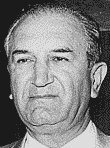
Bonanno
On August 14, 1967, Dara advised the FBI that Joseph Bonanno had regained control of his crime family and that former members who had taken protection from the Gambino Crime Family during the "Banana War" had returned to the fold. [54] He also stated that it was still possible that a "war was about to start in New York City over control of LCN."
The instability of the situation was evident when Dara advised on September 4 that representatives from the Gambino, Genovese and Lucchese Crime Families had met and determined that Joseph Bonanno was "completely crazy" and "unmanageable." [55] Bonanno was a "dead man." [56] His son Bill Bonanno was to be killed too.
Dara said it was possible the Bonanno Crime Family would be absorbed by the Gambino or Lucchese Crime Family, or a new outside leader would take over like Genovese Crime Family veteran Anthony Carillo or Lucchese Crime Family capodecina Carmine Tramunti. [57]
However, on September 14, Dara advised that the other crime families had decided there would soon be a "callout" for members of the Bonanno Crime Family to have a meeting and "decide finally if the Bonanno 'family' members still affiliated with this 'family' wish to switch membership to the Gambino 'family,' Lucchese 'family,' or retire." [58]
A year later, William Dara was still feeding Intel to the FBI about a proposed "callout" of Bonanno Crime Family members. In October 1968, Michael Sabella told him that the on and off "callout" that had finally been scheduled for the end of October was "again cancelled, this time by [Joseph] Bonanno, who has now reaffirmed his position of demanding to be made the 'Boss' of all the New York families. Bonanno now claims the allegiance of the two New York families, including that of 'Mr. Neil' (Aniello Dellacroce)." [59]
Sabella went on to tell Dara that "Bonanno has threatened to 'call out' his 'goon squad' of hired assassins if his demands are not met." He was "fearful that a 'war' is about to start in New York City."
In reality, the FBI already knew Joseph Bonanno had suffered his third heart attack earlier that year and had retired to Arizona. [60]
Execution squads
One of the more remarkable things William Dara told the FBI was that "Joseph Bonanno maintained 'execution squads' throughout the country and specifically in Los Angeles, Kansas City, Las Vegas, Chicago and elsewhere." [61] [62] He called them "the worst kinds of killers" who were loyal only to Bonanno. [63]
He said Bonanno Crime Family member Michael Consolo was killed by the "execution squad" for siding against the Joseph Bonanno faction during an intra-family dispute. [64] [65] Dara said opponents of Joseph Bonanno lived in fear of them, until the killers were eventually "paid off in cash and other considerations by other LCN families to leave [Bonanno]." [66]
Dara told the FBI he had no information on the triple murder in Queens, New York, that killed three members of the Bonanno Crime Family. [67]
Dara went on to say that it was his capodecina Michael Sabella who had warned Carlos Gambino and Thomas Lucchese about Joseph Bonanno's alleged plot to eliminate them and takeover over the LCN in New York City. [68] According to Dara, Bonanno had wanted to unite all the New York City crime families under him and become "capo di capi". [69] Bonanno tried to kill Sabella for the betrayal. [70] This is contrary to the popular understanding that it was Joseph Colombo who had denounced Bonanno to the LCN Commission.
William Dara also alleged that Paul Vario was a member of the Bonanno Crime Family, until he transferred to the Lucchese Crime Family sometime in the mid-1960s. [71] Dara even went so far as to tell the FBI that he sometimes took orders from Vario. [72]
Lucchese and Gambino Updates
In November 1967, William Dara told federal agents that Anthony "Ducks" Corallo and Andimo Pappadio were in Miami meeting with Tony Plate from the Gambino Crime Family. [73]
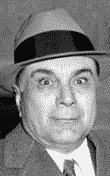
Rosato
On December 1, 1967, William Dara told agents that Anthony Corallo told him that Joseph "Joe Palisades" Rosato was the new boss of the Lucchese Crime Family, that Corallo was the "number two man" and that Carmine Tramunti "has been shifted back to his former position." [74] Corallo was arrested soon after this meeting and the succession plans changed again. [75]
Michael Sabella told Dara in January 1968 that a meeting would soon be held at the home of Paul Vario to select a new boss to replace Joseph Rosato. [76] Participants would arrive by boat because Vario lived on the shore of Long Island, New York.
Sabella said all LCN families would now "be headed by two individuals rather than one." Dara didn't elaborate on who ordered this new directive or what became of it. There is no evidence that this became policy.
In October 1968, Dara told the FBI that Aniello Dellacroce was made the new boss of the Gambino Crime Family. [77] Dara refers to him only as "Mr. Neil" so it's unclear how well he knew Dellacroce or how much he knew about the situation.
Indeed, the Gambino Crime Family administration had been reorganized about that time, as Dara stated, but a better-placed informant had already correctly advised the FBI that Paul Castellano had been promoted to "acting boss" and Dellacroce had only been made underboss. [78]
Dara had a blind spot when it came to properly identifying Gambino Crime Family members in South Florida. He told federal agents that Gambino hoodlums Joseph Indelicato and Joseph Bisogno were members of the Genovese Crime Family. He incorrectly said Agostino Amato and his two sons, Vincent and Frank, were not with the Gambino Crime Family. He also advised that Joseph Silesi wasn't an inducted LCN member. In fact, member-informant Alfredo Santantonio reported that Silesi had overall responsibility for Gambino Crime Family operations in South Florida. [79]
Dara pointed out that James Palmisano was notorious for swindling out-of-state mobsters with bogus deals. Palmisano and his criminal associate, Joseph Indelicato, once took $50,000 from a visiting Gambino Crime Family member to invest in a worthless bar that closed a month after it was sold. The mobster threatened to kill Palmisano and Indelicato unless he got his money back. [80]
Donnie Brasco
In the late 1970s, former FBI agent Joseph Pistone was able to infiltrate the Bonanno Crime Family as a gangster known as Donnie Brasco. In his memoir about his undercover work, Pistone wrote that he crossed paths with many local Bonanno Crime Family members in South Florida but he never acknowledged meeting William Dara, at least publicly. [103] If Dara was on the street at the time, Pistone should have met him.
Murder of Thomas Altamura
William Dara showed his value to the FBI soon after he began to cooperate when he broke down the murder of Gambino Crime Family member Thomas "the Enforcer" Altamura in October 1967. The killer was an associate of Dara's named Anthony "Big Tony" Esperti.

Esperti
Thomas Altamura was a well-known loanshark and bookmaker in the Miami-area. He was close to Santo Trafficante and had a reputation as a killer. [81] Anthony Esperti was a former boxer from New York, who once went three rounds with Cassius Clay (later Muhammed Ali) in 1961. A thief and a muscleman, Esperti was connected to a series of bombings of restaurants in the Miami-area.
Esperti and Altamura were alleged to be butting heads in a turf war and had words in the week leading up to the murder. Altamura was said to have tried to get permission from his mob superiors to whack Esperti. [82]
According to Dara, Altamura had warned Esperti to "stay away from the 79th Street Causeway, Miami Beach, and further, to get out of Miami or he would kill him." [83] The 79th Street Causeway was the location of the restaurant where Altamura was killed. Esperti knew Altamura was gunning for him so he shot him first. [84] Esperti was arrested almost immediately for the murder and was later convicted. [85]
Motive
The available FBI reports don't lay out why William Dara decided to cooperate with law enforcement. Besides being in his interest, of course, two events likely played a part: the armed conflict within the Bonanno Crime Family and a criminal conviction.
The so-called "Banana War" was the backdrop for every Bonanno Crime Family member during the 1960s. The intra-family conflict was set off after longtime family boss Joseph Bonanno, who had fallen out of favor with rival crime family bosses, tried to promote his son over other senior members. This led to a shooting conflict between pro-and anti-Bonanno factions within the crime family. Members were forced to take sides, and some were killed. Former FBI Director J.Edgar Hoover once observed that some of the best LCN member-informants were first developed during periods of internal conflict within a crime family.
Dara himself wanted no part in the shooting and seems to have largely sat out the conflict in South Florida. Dara told the FBI that if he was pressed by his mob superiors about where his loyalties lay, he would "ask to be put in inactive status, that he is "too old" for this nonsense." [86]
He also contemplated transferring to the Lucchese Crime Family to put the fighting behind him. [87] He said he would check with Michael Sabella before he did anything. Another time he said he would follow the decision of the majority of other Bonanno Crime Family members. [88]
The factions within the Bonanno Crime Family would eventually settle their differences and reunite under new leadership, but not before Dara would run into his own trouble with the law.
In 1966, William Dara had tried to extort $25,000.00 from the owner of a trucking company in the Miami-area. [89] He had threatened to shoot the owner's wife and burn his children alive. The owner called the FBI. Dara and his gang were arrested and later convicted on two counts of violation of the Hobbs Act. [90] Dara faced up to forty years in prison. The shakedown attempt was characterized by LIFE magazine as "stupid," a "throwback," and out of step with the new, sophisticated LCN. [91]
Dara was sentenced August 16, 1967, to seven and a half years in prison. Codefendants Samuel Farinella and Anthony Esperti were sentenced to ten years in prison. Dara was sentenced to less time because of a serious heart condition. [92] Esperti was in the process of appealing this conviction when he murdered Thomas Altamura.
The court trial was a financial strain on the sixty-two-year old Dara. After it ended, he told the FBI that he had an appointment to meet with Michael Sabella in New York to borrow money and get back on his feet. [93] Important LCN informants typically received financial compensation from the FBI for cooperating, so this may have been another incentive for Dara.
Decides to talk
One of the first times William Dara is thought to have talked was on August 18, 1967, two days after he was sentenced, when he sat down with FBI agent Ralph Hill. [94] Hill was the same agent who had investigated the Chicago Outfit with William F. Roemer in the 1950s and 60s, before he transferred to the Miami field office. Dara might have been the first Miami-area LCN member to cooperate with the FBI.
The debriefing of William Dara was handled carefully at first. Early on, at least, Dara was meeting the FBI once a week. According to an FBI report, Dara had a natural uneasiness talking with law enforcement so FBI agents were advised:
This informant is not of a nature to be "grilled" at length at any one confrontation. The interview with him usually lasts no longer than an hour at a sitting and some times less. At this stage of his development, the informant retains a certain reticence toward conferences with law enforcement personnel. It is expected that, with proper development of confidence between Agent and informant, these natural barriers will dissolve. [95]
Dara was a diligent informer. Here is example of some of Dara's contacts with federal agents in August 1976.
On August 18, about a week after LCN member John Roselli's body was found floating in Dumfoundling Bay near Miami, federal agents asked Dara if he knew anything about the murder. Dara said he had known Roselli for thirty years but he had no idea who killed him. He said the feeling on the street was the order to kill Roselli came out of Chicago or Detroit. [96]
Then, on August 29, Dara told federal agents that Gambino Crime Family members Tony Plate and Frank Gagliardi had complained to him about "certain unnamed hoodlums from Chicago" who were dumping too many bodies in South Florida and generating bad publicity. This was in light of the recent killing of LCN member John Roselli. Plate and Gagliardi said "the bosses in New York" had been advised and were going to put an end to it. [97]
And then two days later, on August 31, he told the FBI that his criminal associate Stephen Maruca had opened up a new business called Al's Vending Company in Hallandale, Florida. [98] Eight years after he first began to cooperate, Dara was still a productive informant.
If William Dara was the Florida-based Bonanno Crime Family informer, as is suspected, an unfiltered look at his entire FBI file would help to bring the turbulent history of the Bonanno Crime Family in the 1970s into sharper focus.
Death
William Dara died on July 9, 1982. [99] Dara and his wife were taking a commercial flight to Las Vegas when their Boeing 727 airplane crashed at Kenner, Louisiana, a New Orleans suburb. [100]
All 145 people on board died along with eight people in Kenner's Morningside Park neighborhood. [101] The crash, the second deadliest air disaster in U.S. history at the time, was attributed to severe wind shear on the stormy afternoon. Dara was a few days shy of age seventy-seven. A short time before embarking on his ill-fated flight, Dara had been arrested and charged with possession of cocaine. [102]
This work is dedicated to the memory of Edmond Valin, Sr.
Notes
1 FBI, La Cosa Nostra, C.A. Evans, Aug. 21, 1964, NARA Record No. 124-10223-10455. According to the FBI, "there is no adequate substitute for a member-informant, or a sensitively placed highly confidential source [listening device], for the development of accurate information on [La Cosa Nostra]."
2 FBI, MM 1231-C-TE TECIP, FBI Director, Sept. 7, 1967, NARA Record No. 124-10293-10350, p. 4. The document refers to "other Bureau sources who are members of the Bonanno 'family.'" This would indicate that there were at least two other Bonanno Crime Family member-informants besides Dara. Research indicates a member from Arizona, a member from New York City and Salvatore Bonanno had all cooperated by this time.
3 LCN informant symbol number has three parts: 1. the field office handling the informant (MM=Miami), 2. a number unique to the informant in that office, 3. the informant's importance and level of cooperation (C-TE=Top Echelon Informant).
4 Mafia Membership Charts, mafiamembershipcharts.blogspot.com. An excellent reference site for LCN members sorted by era and crime family.
5 FBI, La Cosa Nostra Miami Division, Miami Office, Sept. 11, 1967, NARA Record No. 124-10293-10346; FBI, La Cosa Nostra, Miami Office, Oct. 28, 1967, NARA Record No. 124-10293-10318.
6 FBI, La Cosa Nostra Miami Division, Miami Office, Aug. 22, 1968, NARA Record No. 124-10297-10125, p. 15.
7 The LCN reports used here were declassified as part of a general release of thousands of files related to the FBI's investigation into the John F. Kennedy assassination. Less than 30 pages appear to have any connection to Dara.
8 Certain exceptions include a co-operating witness like Joseph Massino or a controversial informant like Gregory Scarpa.
9 Villano, Anthony, with Gerald Astor, Brick Agent: Inside the Mafia for the FBI, New York: Quadrangle, 1977, p. 85. "...the system demanded a report on a case every forty-five days whether or not anything new had occurred."
10 FBI, La Cosa Nostra AR- Conspiracy, Miami Office, April 26, 1968, NARA Record No. 124-10288-10463. The informant indicated that Vario and Sabella had recently reconciled. Vario was mad at Sabella for leaving the protection of the Lucchese Crime Family and returning to the fold of the Bonanno Crime Family.
11 Coco and Plumeri were high-ranking Lucchese Crime Family members, and Sabella was a high-ranking Bonanno Crime Family member. The informant is likely a LCN member, since all the other participants were inducted.
12 FBI, La Cosa Nostra Miami Division, Miami Office, Aug. 22, 1968, NARA Record No. 124-10297-10125
13 FBI, MM 1231-C-TE, Miami Office, Sept. 15, 1967, NARA Record No. 124-10293-10312.
14 MooseRoots, us-census.mooseroots.com; Gainesville Sun, July 14, 1982. The newspaper account states Dara was born in New York City but was raised in Sicily.
15 "New York Passenger Arrival Lists (Ellis Island), 1892-1924," database, FamilySearch. A "Nicolo Dara" arrived at Ellis Island on Sept. 5, 1907. His last residence was Mazzara, Sicily. Nicholas Dara listed his occupation as "barber" in the 1930 U.S. Census. Brooklyn Daily Star, April 4, 1912. A "Nicholas Dara" of Oyster Bay, NY, was fined and sentenced to 10 days in jail for contempt for refusing to testify in court over a liquor tax violation case against another man. It's unclear if there was a relationship to William Dara but this individual was also identified as a "barber."
16 Dara listed his occupation as "tile setter" in the 1930 U.S. Census, and "tile worker" in the 1940 U.S. Census.
17 Long Island Star-Journal, Dec. 23, 1948. Brother Salvatore Dara was arrested for bookmaking in Long Island City. Brooklyn NY Daily Eagle, Oct. 11, 1931. Dara and his brother Michael were charged with robbing a slot machine.
18 According to the 1940 U.S. Census, his wages for the year were $550.00. He worked a total of 22 weeks all year. He lived at 584 Crescent St., Brooklyn.
19 Gainesville Sun, July 14, 1982; New York Times, April 14, 1940. He was arrested for vagrancy. He lived at 326 Vermont St., Brooklyn.
20 Brooklyn Eagle, Oct. 25, 1950. Dara was one of 28 "hoodlums" rounded up from the Brooklyn underworld. The newspaper reported that Dara hadn't worked in the last eight years. He lived at 939 Belmont Ave., Brooklyn. Joseph Dara, his brother, was also arrested.
21 FBI, MM 1231-C-TE TECIP, Miami Office, Sept. 15, 1967, NARA Record No. 124-10293-10312. Two other inductees were "Pepe" and "Farni" (last names unknown).
22 FBI, La Cosa Nostra Miami Division, Miami Office, Aug. 22, 1968, NARA Record No. 124-10297-10125; Mafia Membership Charts, mafiamembershipcharts.blogspot.com. Although Sabella was younger than Dara, he was inducted into LCN earlier. Sabella was born in Brooklyn, New York. He came up under capodecina John Bonventre and later succeeded him in the 1940s. Sabella was especially active in the Little Italy section of Manhattan. He died in 1988.
23 FBI, La Cosa Nostra Miami Division, Miami Office, Sept. 11, 1967, NARA Record No. 124-10293-10346.
24 FBI, Crime Conditions in the Miami Division, Miami Office, Nov. 15, 1963, NARA Record No. 124-10208-10000, p. 55.
25 FBI, Criminal Intelligence Program Miami Division, Miami Office, Aug. 31, 1962, NARA Record No. 124-10194-10175.
26 FBI, La Cosa Nostra Anti-Racketeering - Conspiracy, Aug. 12, 1963, NARA Record No. 124-10220-10110. The FBI appears to have been reluctant to disclose all its sources in order to protect them, especially after the murder of Gambino Crime Family member-informant Alfredo Santantonio. FBI, Memorandum, Philadelphia Office, May 12, 1967, NARA Record No. 124-10286-10493, p. 6. "A member can only be identified through a highly confidential source [listening device] or an admitted member."
27 FBI, La Causa Nostra, New York Office, Jan. 31, 1963, NARA Record No. 124-10211-10300, p. 51. It appears the FBI had not yet developed a member-informant in the Bonanno Crime Family at the time of the hearings. FBI, Criminal Intelligence Program, New York Office, Aug. 16, 1963, NARA Record No. 124-10212-10393. Many LCN members already secretly identified by Gregory Scarpa and Alfredo Santantonio weren't included on the Family Charts.
28 FBI, La Cosa Nostra Miami Division, Miami Office, Dec. 13, 1963, NARA Record No. 124-10277-10299, p. 2.
29 FBI, MM 1231-C-TE TECIP, Miami Office, Aug. 21, 1967, NARA Record No. 124-10293-10329, p. 4.
30 Mafia Membership Charts, mafiamembershipcharts.blogspot.com. Research indicates the Bonanno Crime Family had significantly more members than 20 at this time. Dara could have meant that his capodecina oversaw a regime of 20 soldiers.
31 FBI, MM 1231-C-TE TECIP, Miami Office Sept. 7, 1967, NARA Record No. 124-10293-10350.
32 FBI, MM 1231-C-TE TECIP, Miami Office, Sept. 15, 1967, NARA Record No. 124-10293-10312. Dara said these requirements "went out approximately twenty-five years ago" which would be circa 1942. FBI, Criminal Digest, March 11, 1963, NARA Record No. 124-10220-10084, p. 7. Genovese Crime Family capodecina Angelo De Carlo complained that many new LCN members had never killed anyone. "They shouldn't let nobody in this unless he's croaked a couple of people. Today you got a million guys in here that never broke an egg."
33 FBI, Santo Trafficante, JR aka Jose Trafficante, Miami Office, Aug. 19, 1968, NARA Record No. 124-10213-10143, p. 26.
34 FBI, MM 1231-C-TE TECIP, Miami Office, Aug. 21, 1967, NARA Record No. 124-10293-10329.
35 FBI, MM 1231-C-TE TECIP, Miami Office, Aug. 21, 1967, NARA Record No. 124-10293-10329.
36 FBI, La Cosa Nostra, New York Office, Sept. 26, 1968, NARA Record No. 124-10290-10437, p. 188.
37 FBI, La Cosa Nostra, New York Office, Sept. 26, 1968, NARA Record No. 124-10290-10437, p. 61.
38 FBI, Santo Trafficante, Miami Office, June 14, 1968, NARA Record No. 124-10197-10297.
39 FBI, Santo Trafficante, Miami Office, Dec. 12, 1968, NARA Record No. 124-10213-10200.
40 FBI, Santo Trafficante, JR., Miami Office, Sept. 13, 1967, NARA Record No. 124-10200-10227, p. Cover-C.
41 FBI, Pasquale Michael Erra, aka., Miami Office, June 18, 1967, NARA Record No. 124-10279-10231, p. 4. FBI, La Cosa Nostra, New York Office, Sept. 26, 1968, NARA Record No. 124-10290-10437, p. 61.
42 FBI, TECIP La Cosa Nostra, Miami Office, June 21, 1968, NARA Record No. 124-10226-10167. Some LCN members mentioned were Genovese Crime Family members Rocco Pellegrino, Frank "Hialeah" Pelliccio, and Henry Rubino, Gambino Crime Family member John Tronolone and Lucchese Crime Family member Salvatore "Sal the Sailor" Ciccone. FBI, La Cosa Nostra Miami Division, Miami Office, Aug. 22, 1968, NARA Record No. 124-10297-10125.
43 FBI, Santo Trafficante, JR., Miami Office, Sept. 13, 1967, NARA Record No. 124-10200-10227, p. Cover-C
44 FBI, Santo Trafficante, JR., Miami Office, Sept. 13, 1967, NARA Record No. 124-10200-10227, p. Cover-C. FBI, MM 1231-C-TE TECIP, Miami Office, Aug. 21, 1967, NARA Record No. 124-10293-10329, p. 4.According to Dara, the shipment was never delivered because plans had not "jelled".
45 FBI, La Cosa Nostra Miami Division, Miami Office, Aug. 22, 1968, NARA Record No. 124-10297-10125.
46 FBI, MM 1231-C-TE TECIP, Miami Office, Aug. 21, 1967, NARA Record No. 124-10293-10329. Plumeri said that Vario was not under consideration to be the next boss.
47 FBI, La Cosa Nostra, Miami Office, March 30, 1069, NARA Record No. 124-10297-10094.
48 FBI, David Yaras, Miami Office, Nov. 21, 1967, NARA Record No. 124-90073-10039.
49 FBI, Samuel Giancana, Miami Office, Sept. 6, 1967, NARA Record No. 124-10195-10197. Dara's information was problematic at best. He acknowledged that Giancana may have been replaced as Outfit boss by this time but the proceeds from the bombing operation would still go to him or the Chicago Outfit. Information from other sources indicated the individual likely responsible for the bombings was Tony Esperti, a Dara associate. This would indicate that Dara likely knew much more about the bombings than he let on, or in fact, he was involved to some degree. Furthermore, Frank Rosenthal, later made famous by director Martin Scorsese in the movie Casino, was not known to be involved in violent crime and unlikely to be behind such actions.
50 FBI, Carlos Marcello, Miami Office, Jan. 23, 1968, NARA Record No. 124-10215-10099. Source T-16 is Dara.
51 FBI, La Cosa Nostra, New York Office, Sept. 26, 1968, NARA Record No. 124-10290-10437, p. 255.
52 FBI, La Cosa Nostra Miami Division, Miami Office, Aug. 22, 1968, NARA Record No. 124-10297-10125.
53 Vario was based in Brooklyn, parts of which are a Bonanno Crime Family stronghold. If Vario had come up with the Bonannos, it might explain why he seemed to be involved in their affairs.
54 FBI, La Cosa Nostra, New York Office, Oct. 20, 1967, NARA Record No. 124-10277-10308, pp. 48-49.
55 FBI, La Cosa Nostra, New York Office, Oct. 20, 1967, NARA Record No. 124-10277-10308, p. 49.
56 FBI, La Cosa Nostra AR-Conspiracy, Miami Office, Sept. 5, 1967, NARA Record No. 124-10293-10348.
57 FBI, La Cosa Nostra AR-Conspiracy, Miami Office, Sept. 6, 1967, NARA Record No. 124-10293-10333. FBI, La Cosa Nostra, New York Office, Oct. 20, 1967, NARA Record No. 124-10277-10308, p. 49.
58 FBI, La Cosa Nostra, New York Office, Oct. 20, 1967, NARA Record No. 124-10277-10308, p. 49.
59 FBI, La Cosa Nostra AR-Conspiracy, Miami Office, Oct. 29, 1968, NARA Record No. 124-10293-10243.
60 Bonanno, Joseph, with Sergio Lalli, A Man of Honor: The Autobiography of Joseph Bonanno, New York: Simon & Schuster, 1983, p. 291.
61 FBI, MM 1231-C-TE TECIP, FBI Director, Sept. 7, 1967, NARA Record No. 124-10293-10350.
62 Bonanno Crime Family capodecina Thomas "Smitty" D'Angelo and two other members who broke with Joseph Bonanno were machined gunned to death in November 1967. This killing may have helped to give credence to the belief that Bonanno had "execution squads" at his disposal.
63 FBI, MM 1231-C-TE TECIP, Miami Office, Aug. 21, 1967, NARA Record No. 124-10293-10329.
64 FBI, La Cosa Nostra, Miami Office, May 4, 1968, NARA Record No. 124-10290-10391, p. 1. One of the hit men was said to be from Denver.
65 FBI, La Cosa Nostra AR-Conspiracy, Miami Office, April 26, 1968, NARA Record No. 124-10288-10463. According to Dara, Consolo was a close associate of Sabella and his execution led Sabella to leave the protection of the Lucchese Crime Family and to return to the Bonanno Crime Family.
66 FBI, La Cosa Nostra AR-Conspiracy, Miami Office, Sept. 5, 1967, NARA Record No. 124-10293-10348, p. 2.
67 FBI, La Cosa Nostra, Miami Office, Nov. 14, 1967, NARA Record No. 124-10289-10186.
68 Sabella was a capodecina under Carmine Galante. By most accounts, Galante was a Joseph Bonanno-loyalist so it seems unlikely that he would have favored Sabella if he had betrayed Bonanno. Nonetheless, Sabella and Dara were cousins and confidants. It's reasonable to think Dara would have been keenly aware of Sabella's activities.
69 FBI, La Cosa Nostra, New York Office, Oct. 20, 1967, NARA Record No. 124-10277-10308, p. 15.
70 FBI, La Cosa Nostra, Miami Office, Sept. 5, 1967, NARA Record No. 124-10293-10348, p. 2. FBI, La Cosa Nostra, New York Office, Oct. 31, 1967, NARA Record No. 124-10293-10325, p. 2. There is evidence that Sabella's loyalties may have shifted with the prevailing winds within the Bonanno Crime Family. In early 1968, an unidentified New York City-based Bonanno Crime Family member-informant advised that the new Administration had returned some "holdings in Florida which had been taken away from Sabella as a result of his "fence-hopping" during the dissension following Joe Bonanno's fall from power."
71 FBI, MM 1231-C-TE TECIP, Miami Office, Aug. 21, 1967, NARA Record No. 124-10293-10329. Dara said Vario was a favourite of Thomas Lucchese.
72 Some Bonanno Crime Family members tried to escape the fighting by seeking temporary refuge with the Gambino and Lucchese Crime Families during the Banana War. Dara and Vario were from the same part of Brooklyn.
73 FBI, La Cosa Nostra, Miami Office, Nov. 14, 1967, NARA Record No. 124-10289-10186.
74 FBI, La Cosa Nostra, Miami Office, Dec. 1, 1967, NARA Record No. 124-10289-10209, p. 1. Rosato was the brother-in-law of Thomas Lucchese.
75 FBI, La Cosa Nostra, Miami Office, Jan. 16, 1968, NARA Record No. 124-10289-10250, p. 2.
76 FBI, La Cosa Nostra, Miami Office, Jan. 27, 1968, NARA Record No. 124-10289-10278.
77 FBI, La Cosa Nostra, Miami Office, Oct. 29, 1968, NARA Record No. 124-10293-10243.
78 FBI, La Cosa Nostra, New York Office, Oct. 20, 1967, NARA Record No. 124-10277-10308, p. 279. An informant, thought to be a high-ranking Gambino Crime Family member, said the Gambino Crime Family reorganized their Family Administration in February 1967. Carlos Gambino remained official boss but stepped away from day-to-day operations. FBI, La Cosa Nostra AR-Conspiracy, New York Office, Jan. 2, 1969. Colombo Crime Family member-informant Gregory Scarpa told the FBI that Dellacroce had been bumped up to underboss.
79 FBI, MM 1231-C-TE TECIP, Miami Office, Sept. 15, 1967, NARA Record No. 124-10293-10312.
80 FBI, MM 1231-C-TE TECIP, Miami Office, Sept. 15, 1967, NARA Record No. 124-10293-10312. "Big Steve" was described as a " [deceased] junk dealer from New York..." Steve Armone may be the mobster who got taken.
81 FBI, Santo Trafficante, JR., aka T Moetos, Tampa Office, Jan. 6, 1966, NARA Record No. 124-10200-10238, p. 18. FBI, Angelo Bruno, Miami Office, June 19, 1964, NARA Record No. 124-10225-10223.
82 FBI, Santo Trafficante, JR., aka Jose Trafficante, Miami Office, Aug. 19, 1968, NARA Record No. 124-10213-10143, p. 29. Permission to kill Esperti was denied.
83 FBI, La Cosa Nostra AR-Conspiracy, Miami Office, Nov. 14, 1967, NARA Record No. 124-10289-10186.
84 FBI, Santo Trafficante, AKA, AR. Tampa Office, Dec. 7, 1967, NARA Record No. 124-10205-10227, p. 5. A source said that Joseph Indelicato was held partially responsible for murder by his mob superiors because he was thought to have warned Esperti that Altamura intended to kill him. Indelicato had told Altamura earlier that he didn't have the authority to ban Esperti from Miami.
85 The murder was committed in front of witnesses in a crowded restaurant. Esperti received a long prison sentence. He died in 2002.
86 FBI, La Cosa Nostra AR-Conspiracy, Miami Office, Oct. 28, 1967, NARA Record No. 124-10293-10318.
87 FBI, La Cosa Nostra Miami Division, Miami Office, Aug. 22, 1968, NARA Record No. 124-10297-10125. Dara said he would transfer if advised to by Michael Sabella.
88 FBI, La Cosa Nostra, Miami Office, Sept. 5, 1967, NARA Record No. 124-10293-10348, p. 2.
89 FBI, David Yaras, Miami Office, Sept. 23, 1966, NARA Record No. 124-90073-10028, p. 4. St. Petersburg Times, Feb. 23, 1967.
90 The Evening Independent, Feb 22, 1967. John Maloney, the trucking firm owner, was approached by Dara's lawyer, former judge Mitchell Goldman, to change his testimony. Maloney said he was beaten by two thugs and told he would "see his children burned to ashes".
91 Smith, Sandy, "Mobsters in the Market Place: Money, Muscle, Murder," LIFE, Sept. 1, 1967. Smith incorrectly placed Dara and his gang in the Gambino Crime Family.
92 Gainesville Sun, July 14, 1982. It raises the suspicion that Dara received a more lenient sentence because he had already agreed to cooperate.
93 FBI, MM 1231-C-TE TECIP, Miami Office, Sept. 11, 1967, NARA Record No. 124-10293-10346. He said he had to "re-finance" after "monetary setbacks". Was this an attempt to get (more) money from the FBI?
94 FBI, MM 1231-C-TE TECIP, Miami Office, Aug. 21, 1967, NARA Record No. 124-10293-10329. This report refers to an earlier interview (which couldn't be located in the available reports) between the informant and the FBI. The date of the first interview was sometime before Aug. 18. FBI, La Cosa Nostra, New York Office, Oct. 20, 1967, NARA Record No. 124-10277-10308. FBI, Santo Trafficante, Jr., Miami Office, Sept. 13, 1967, NARA Record No. 124-10200-10227. This report indicates he began to share confidential information on Aug. 14, 1967, two days before his sentence was handed down. The rest of the report references a date of Aug. 18, so maybe Aug. 14 is an error. Or it could mean Dara received a lesser sentence than his two codefendants because he had already agreed to cooperate, not because of a bad heart as was the official reason given in court. FBI, La Cosa Nostra Miami Division, Miami Office, Aug. 22, 1968, NARA Record No. 124-10297-10125. According to this report, Dara shared confidential information as early as "May 4, 1967." He told agents that Pasquale Erra controlled criminal activities at the Dream Bar in the Johnina Hotel in Miami Beach. The date was likely an error and should read "May 4, 1968."
95 FBI, MM 1231-C-TE- TECIP, Miami Office, Sept. 11, 1967, NARA Record No. 124-10293-10350.
96 FBI, John Roselli-Victim, Miami Office, Aug. 18, 1976, NARA Record No. 124-10351-10132.
97 FBI, Roskil, Miami Office, Aug. 30, 1976, NARA Record No. 124-10351-10237.
98 FBI, Roskil, Miami Office, Aug. 31, 1976, NARA Record No. 124-10351-10243.
99 Gainesville Sun, July 14, 1982.
100 Pan Am Flight 759 flew between Miami and San Diego with stops in New Orleans and Las Vegas. The airplane crashed shortly after taking off from the New Orleans airport. The crash was blamed on a microburst that forced the airplane down.
101 Gainesville Sun, July 14, 1982.
102 Fort Walton Beach Playground Daily News, Sept. 11, 1981. Dara was freed after posting a $250,000 bond. Others arrested included Bonanno Crime Family member Joseph Puma, who police described as "the godfather of Broward County". Puma was charged with "dealing in stolen property and maintaining a gambling house." Volcansek, Mary L., Judicial Impeachment: None Called for Justice, Champaign: University of Illinois Press, 1993. After his death, Dara was implicated in the bribery of federal judge Alcee Hastings. Hastings was accused of accepting money to reduce the prison sentence of two men.
103 Pistone, Joseph D., with Richard Woodley, Donnie Brasco: My Undercover Life in the Mafia, New York: New American Library, 1987. p 74; Pistone, Joseph, and Charles Brandt, Donnie Brasco: Unfinished Business, Philadelphia: Running Press, 2007. p 92. Early in his undercover role, Pistone used an FBI informant in Miami to bolster his bona fides as a mobster. Pistone was supposedly a jewel thief and he did a heist with this informant. Suspicious members of the Colombo Crime Family in Brooklyn phoned this informant to ask him to vouch for Pistone. We don't know what was said, but the informant must have been a significant organized crime figure since his word, from a thousand kilometres away, was sufficient to reassure them. Pistone described him as "mobbed up" and "a thief in Miami who was an informant for another agent down there." Could he have been William Dara? FBI reports show he was an active informant at that time.
